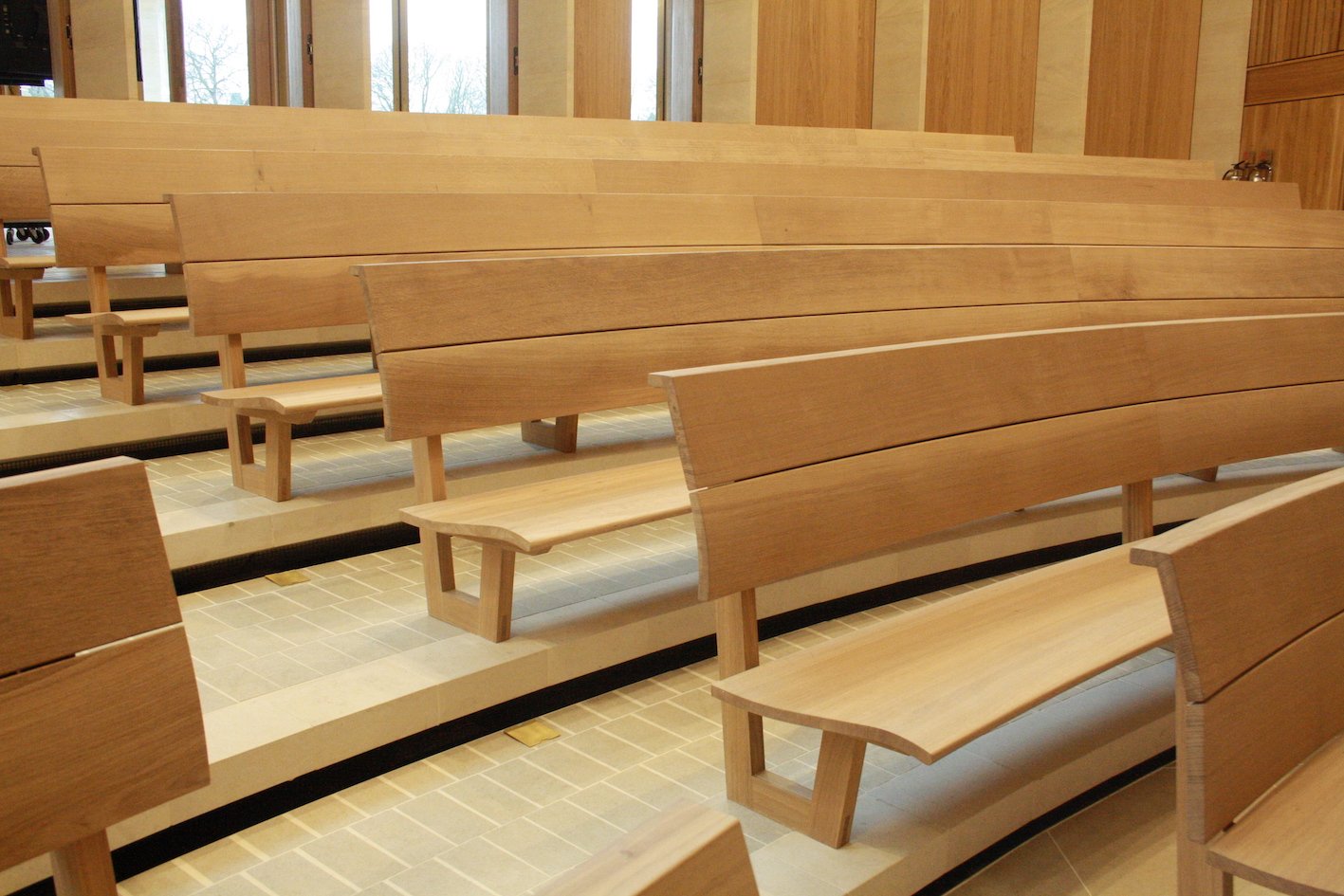
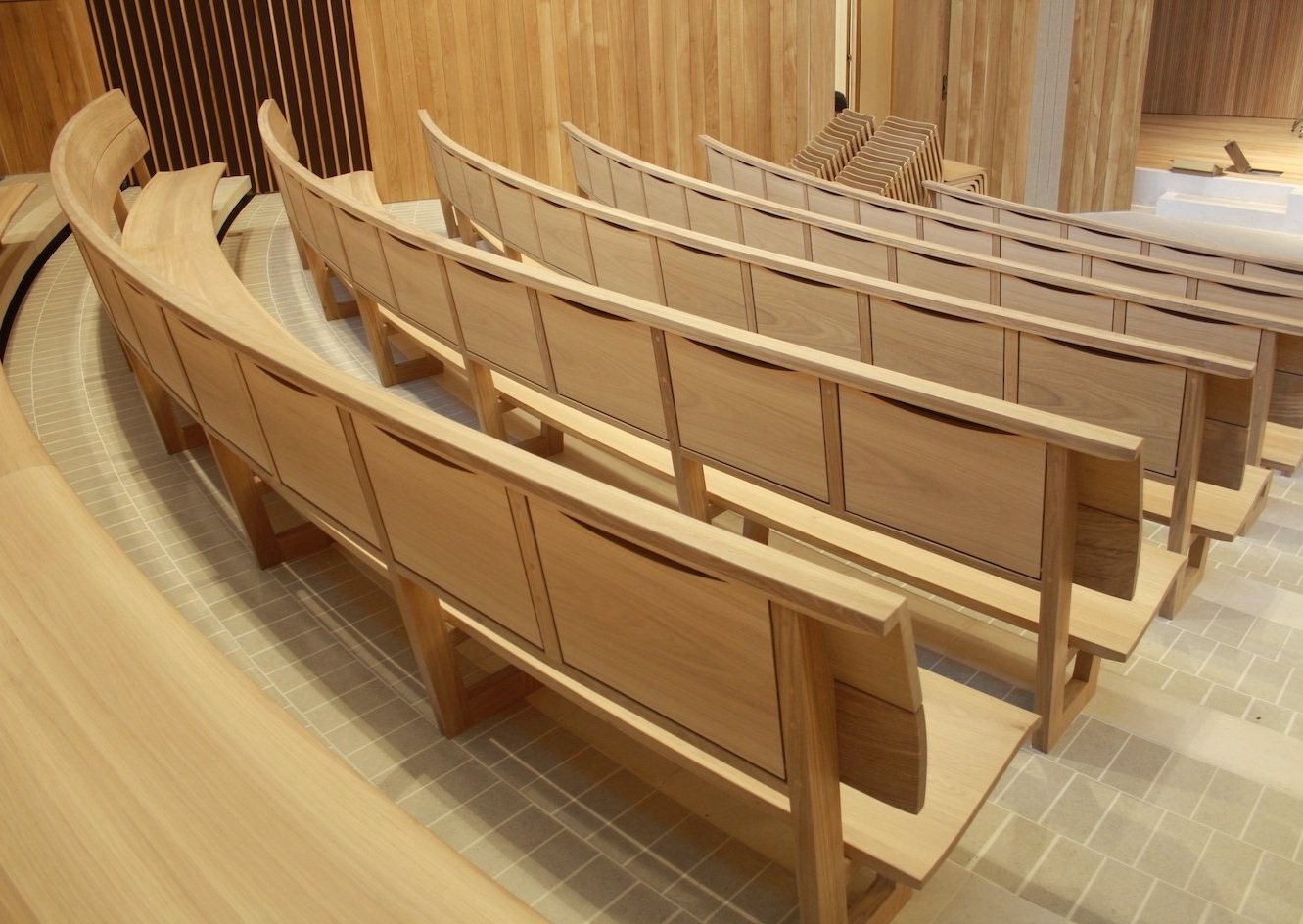
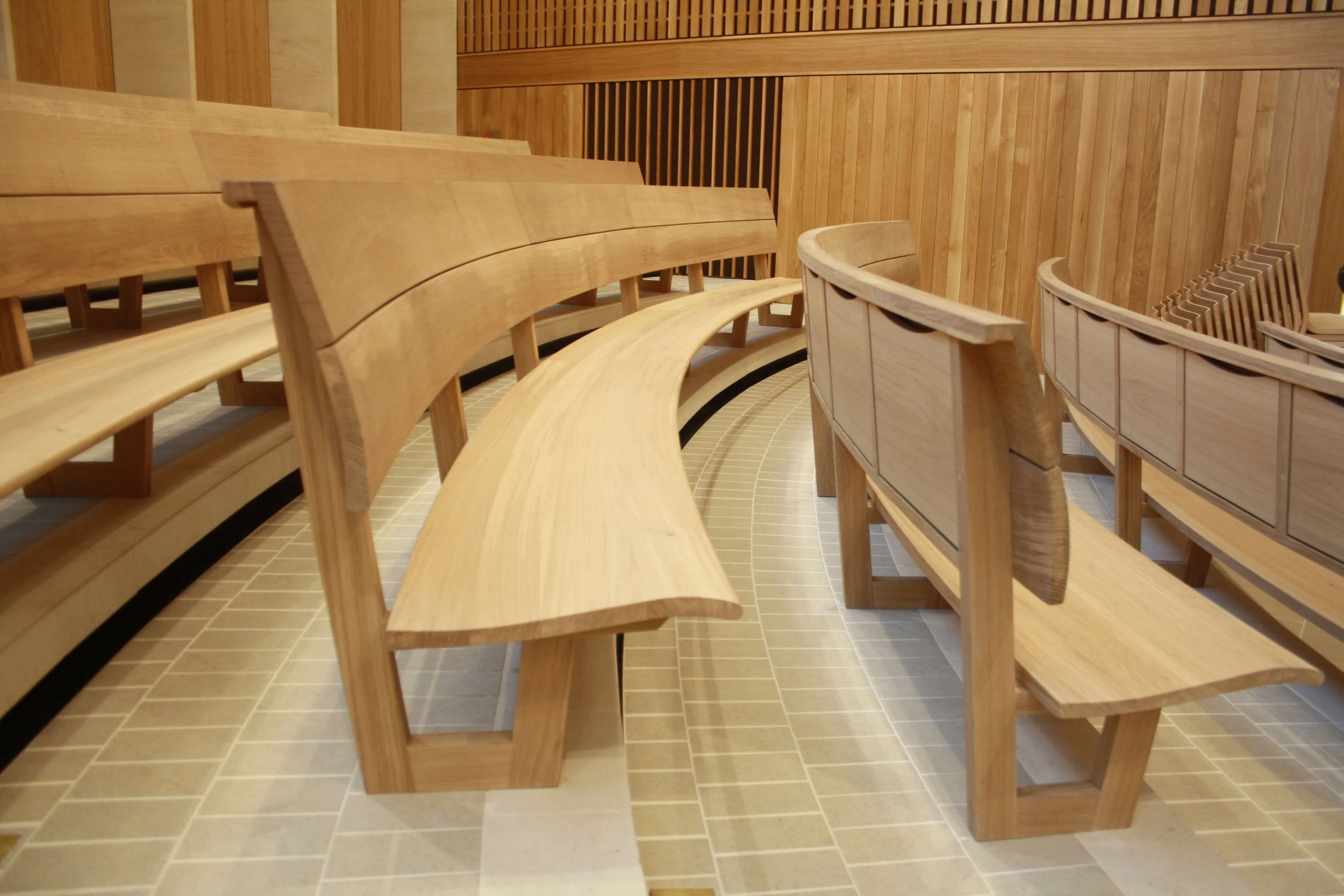
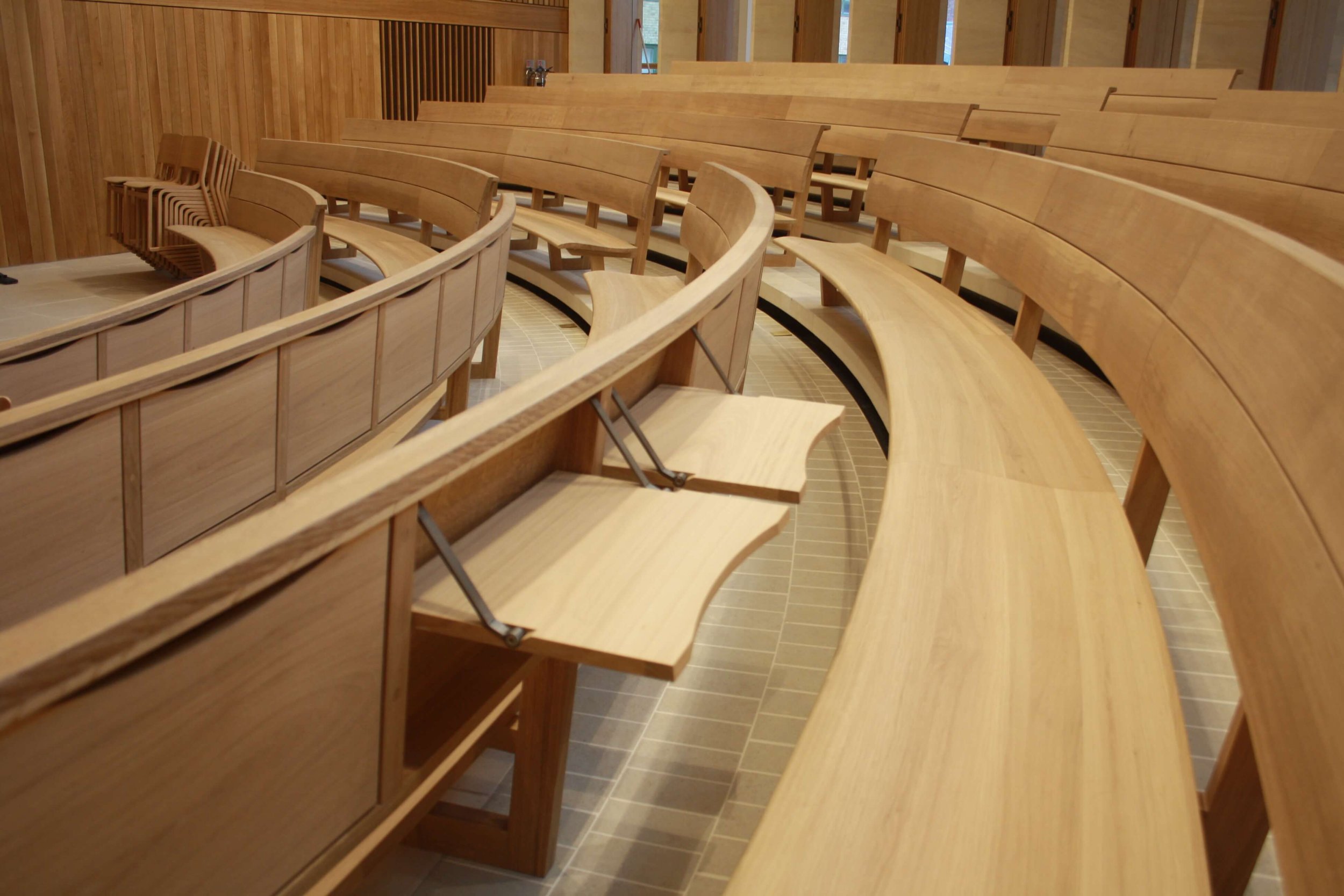
COMMISSIONS
There have been numerous commissions, these are examples of the larger bespoke projects.
AUDITORIUM SEATING, WORCESTER COLLEGE, OXFORD UNIVERSITY, 2015
Worcester College wanted their new auditorium to have the air of an amphitheatre, it had to be suited to lectures, conferences and recitals.
In common with all seating designs, my top priority is comfort over a sustained period and for visual and practical reasons I wanted to avoid upholstery. First we made solid seats to prove their comfort.
The action of the writing surfaces were then devised using an original but simple mechanism, and with the seats, tested on a full sized prototype section of 3 seats.
The sweep of the seating arcs are made with laminated strips of oak, sawn and then glued together in the position they had been in their original planks, the backs are steam bent, all in solid oak. The seating was made by Benchmark, on time and on budget.
SOHO GREEN, 2009
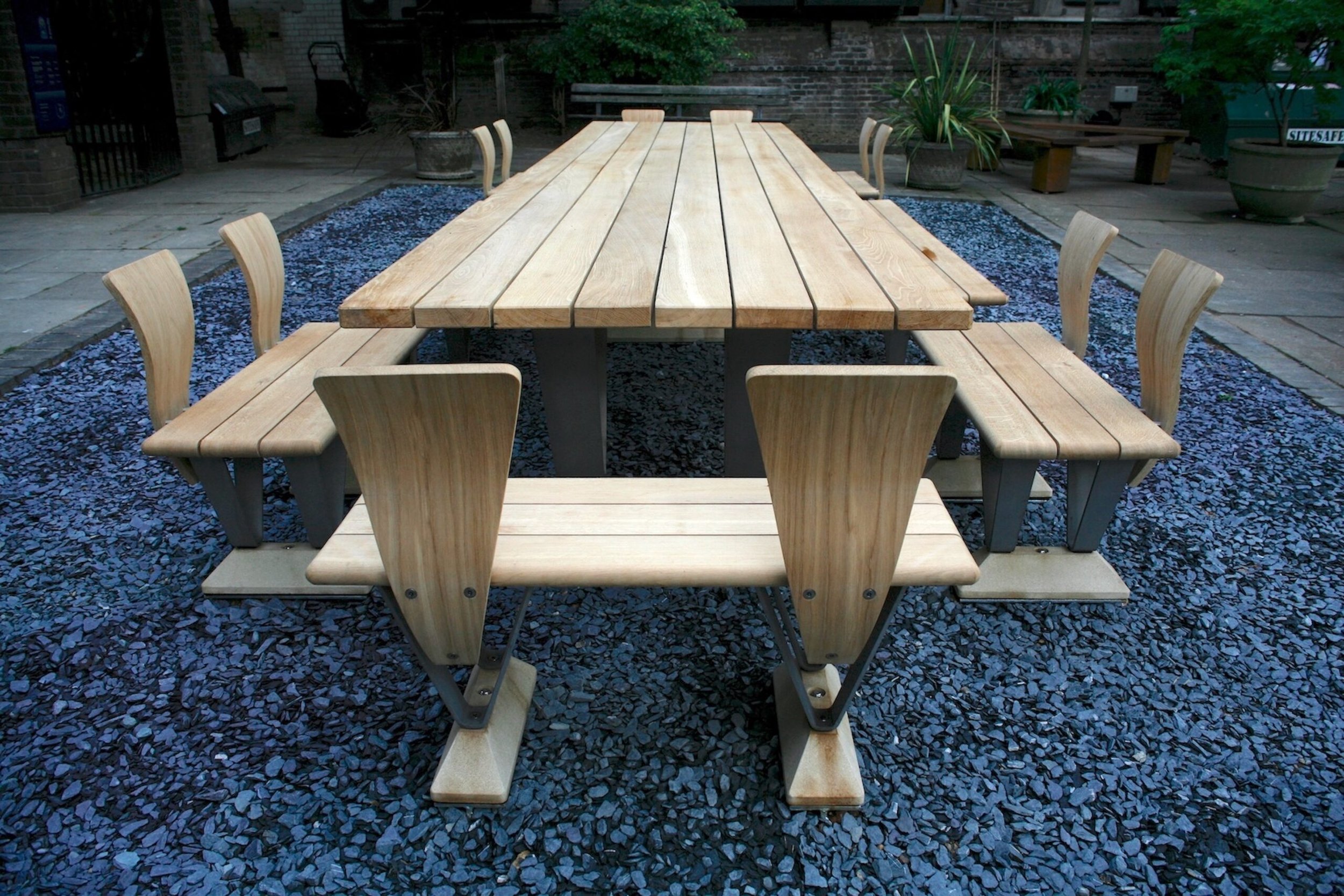
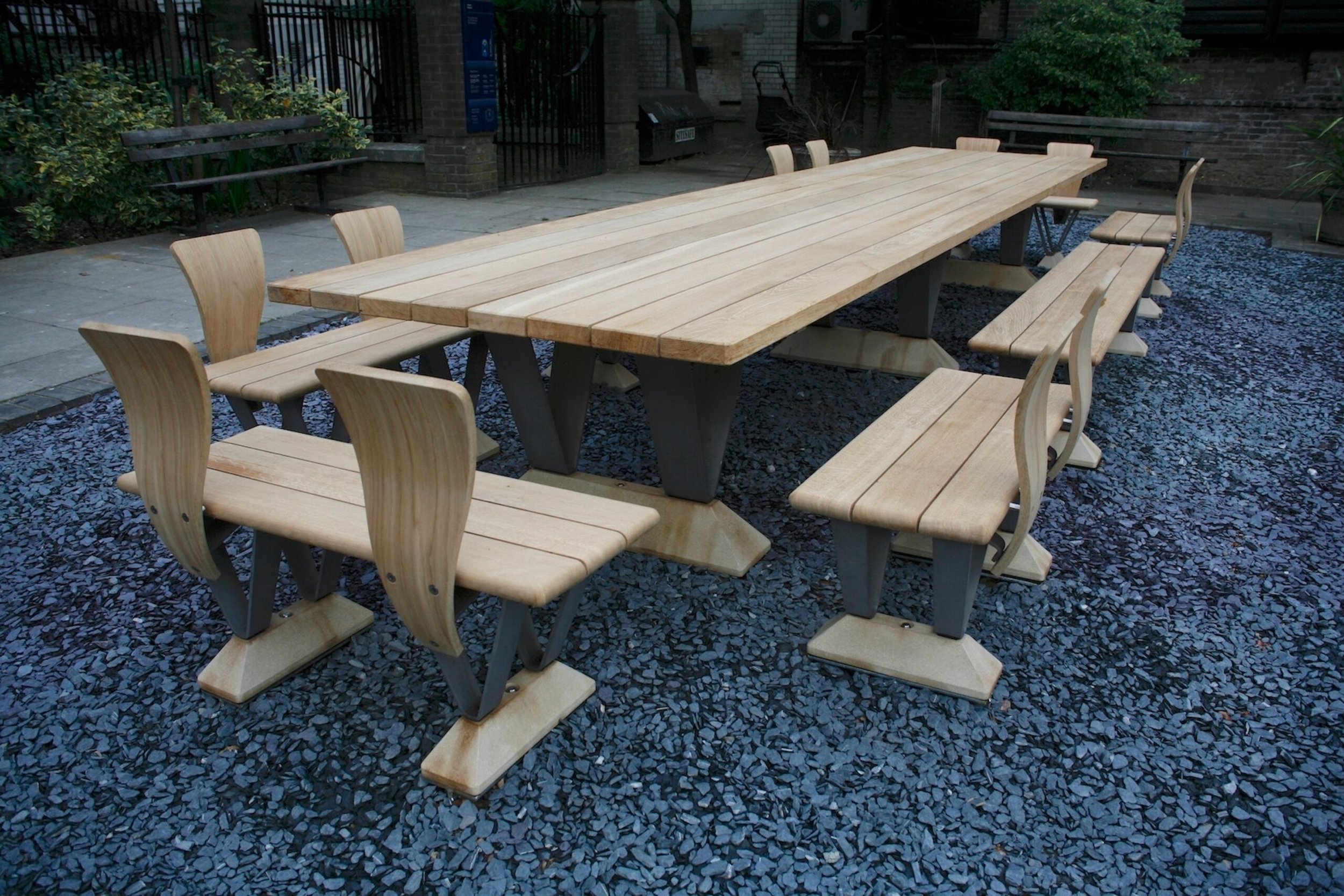
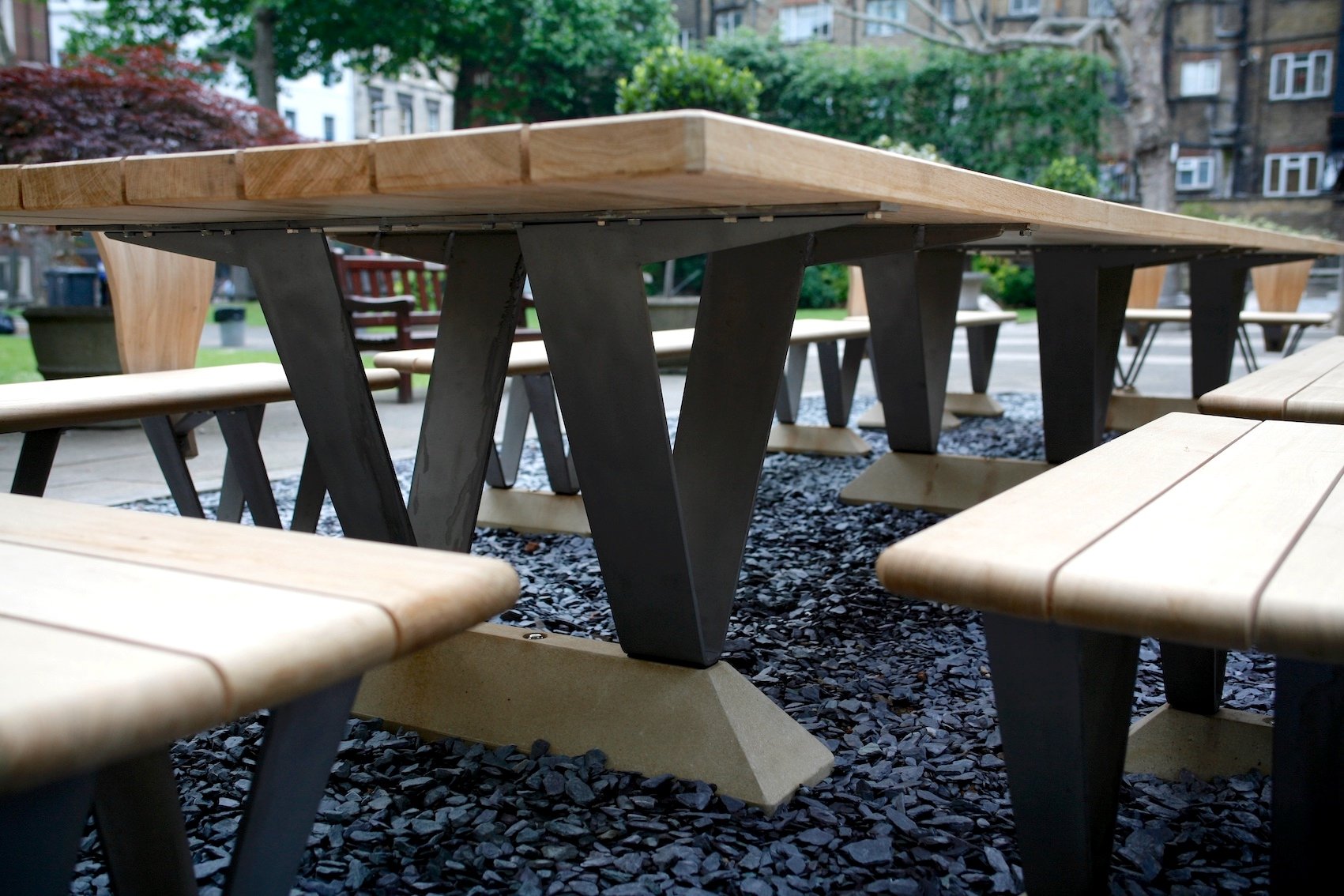
London’s Soho Green in Wardour Street has a new and very popular addition – a massive 5.2 metre-long table with seating for 20 adults, or many more children. The top is English Oak, the leg structure is bead-blasted stainless steel and the feet are cast stone. The commission followed a successful competition entry.
Soho Green, 17 Meard Street, Soho, London, W1F 0EU
LUDLOW FARMSHOP, 2007
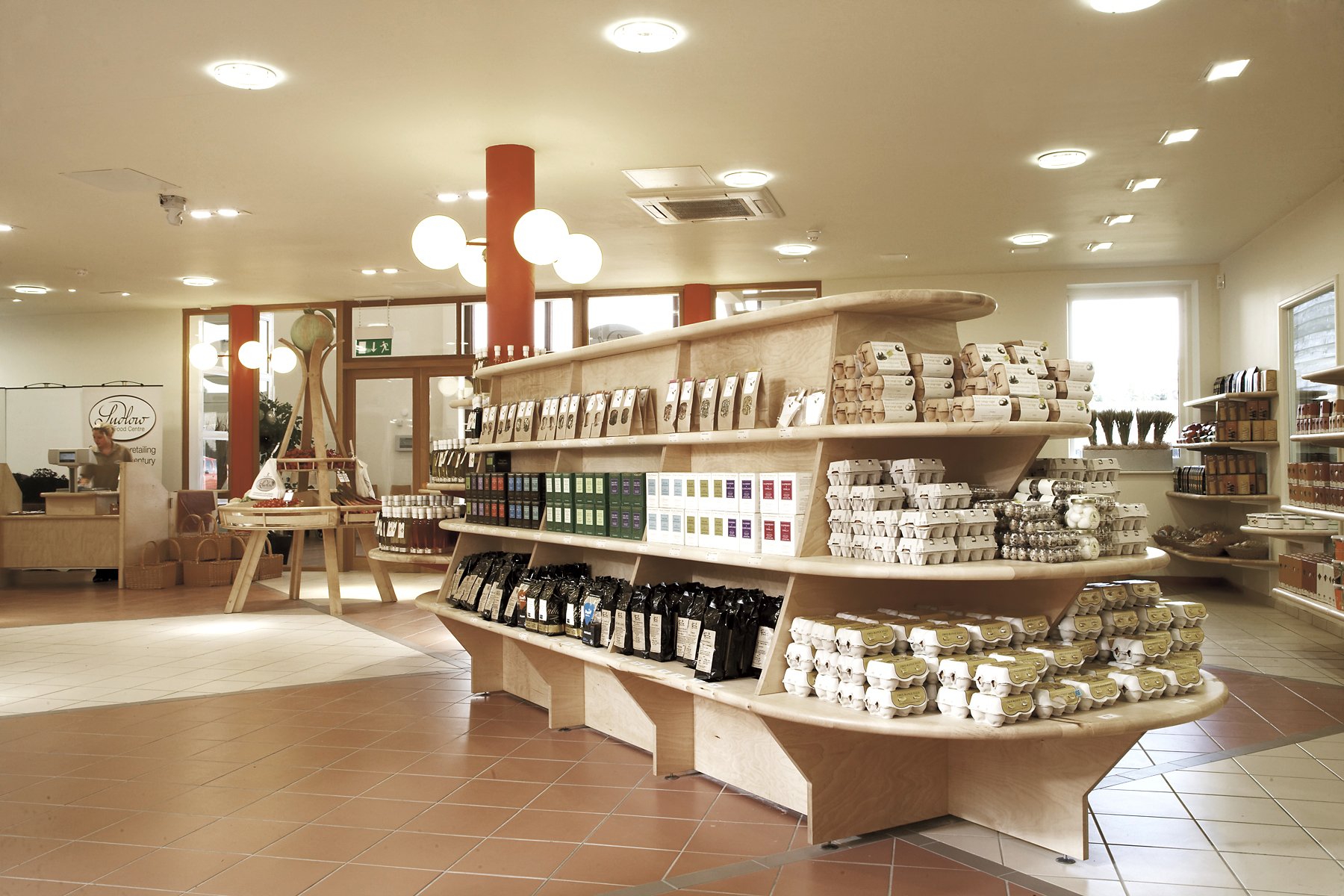

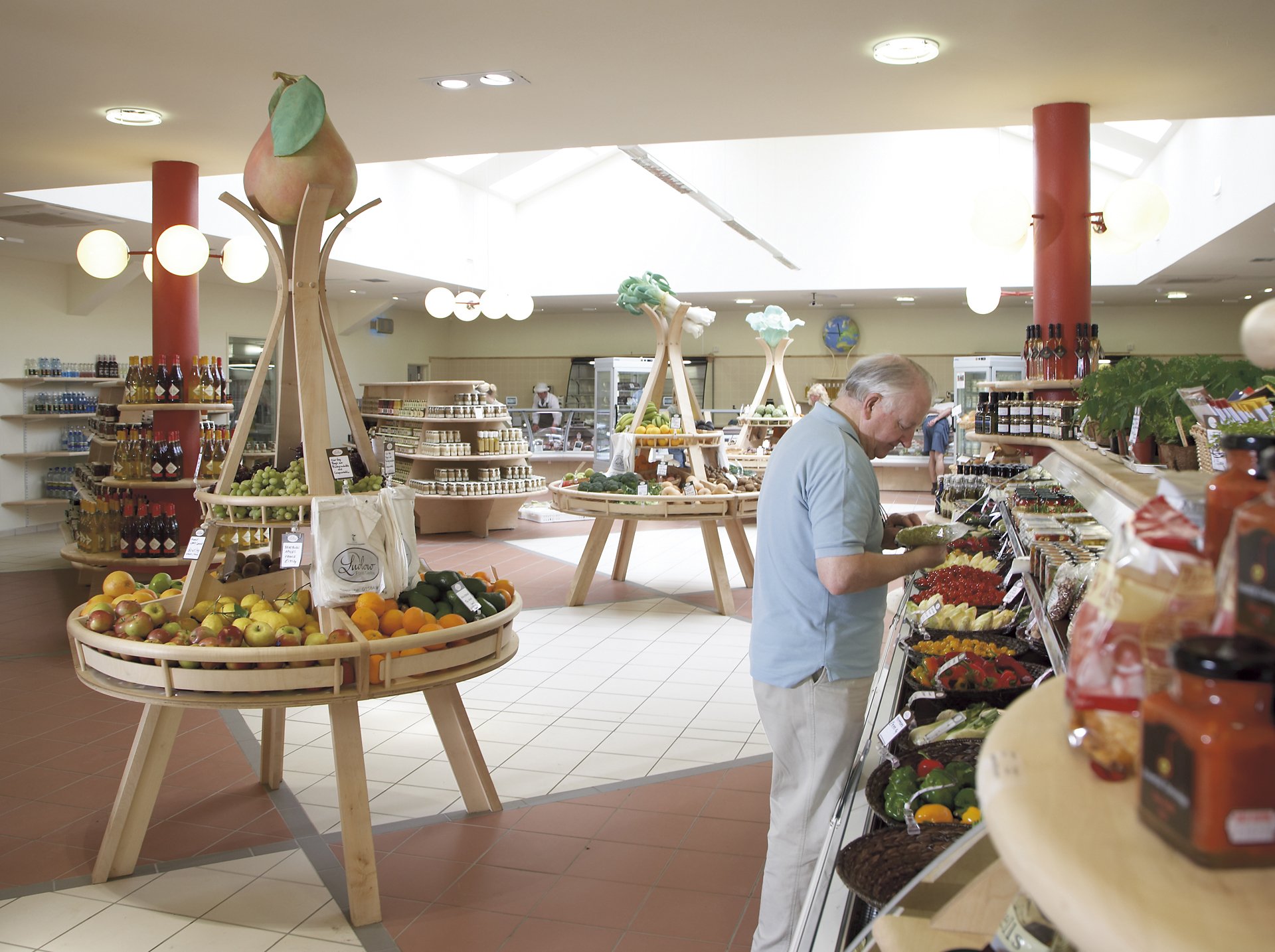
Ludlow Farmshop is a flagship for a new brand of locally-produced foods, housing integrated preparation and retail spaces.
The retail space is flowing and uncluttered, and the clean lines of the solid sycamore units are offset by quirky fairytale touches. The layout of the shop, apart from satisfying the usual requirements of a retail space, is also designed to emphasise the link between food production and point of sale.
The timber used internally is sycamore, sourced from the Earl of Plymouth Estate, the Food Centre’s owners and local to the project. The sycamore was felled and planked in October 2005, then air-dried, before being re-sawn to optimised widths and kiln dried locally.
Given that Ludlow Farmshop has been created to produce and sell local food, it is particularly relevant that the timber used has also been grown and planked on the estate.
In addition to fitting the scheme and the Ludlow Food Centre product branding, sycamore is also a plentiful and much under-used resource and has a traditional association with kitchens and food preparation.
Ludlow Farmshop, Bromfield, Ludlow, Shropshire, SY8 2JR
THE SCOTTISH PARLIAMENT RECEPTION DESK, 2004
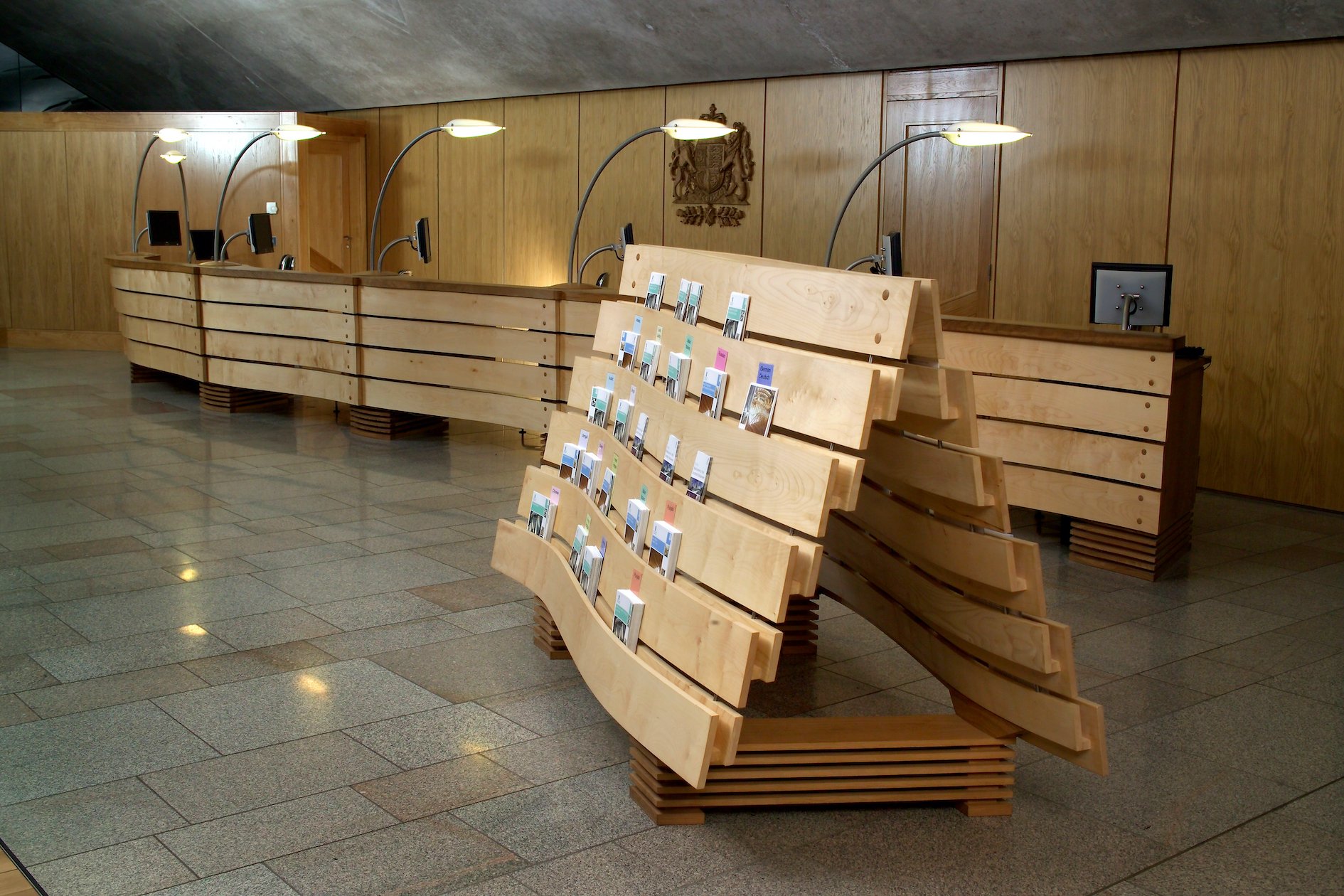
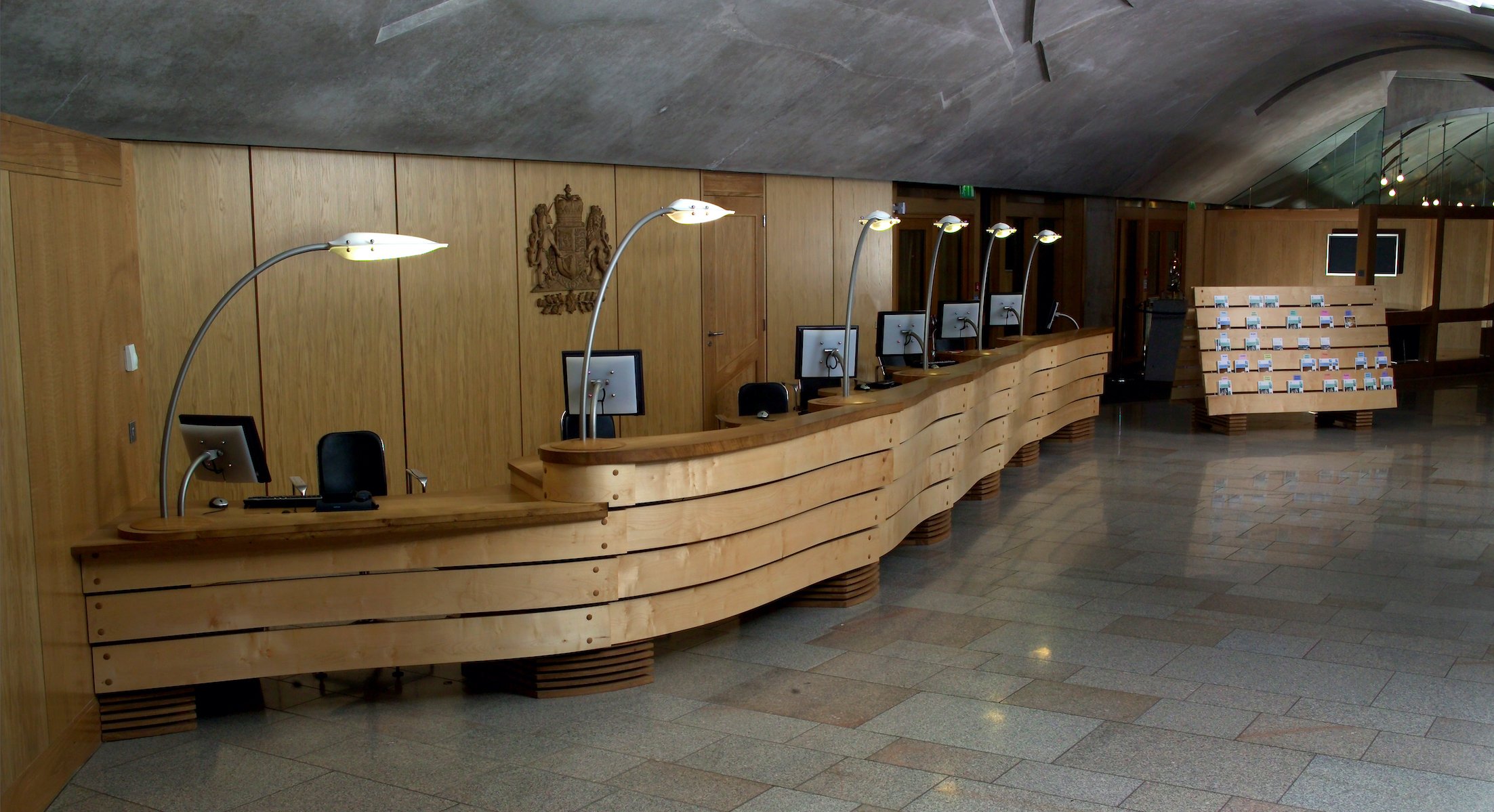
The Scottish Parliament Building has a strong sense of landscape, reminiscent of Scotland’s rock forms and land mass.
Democracies need people’s involvement. They are like a fluid, air or water, feeding and flowing through the building. The Reception Desk is, like a plant, rooted to the architecture but drawn along with the flow of people, both formed by and forming their movement into the building. It is intended as a point of human reference to the building and the institution.
At its end, the metre slows with the last two sections bracketing the space and leading you to a free-standing vane that echoes the desk’s movement and holds the Parliament’s printed material.
Much of the dynamic of the piece is drawn from the building’s geometry but the fluid energy, the ripple, is about making common ground with visitors, drawing them into the democratic process. Each counter is well defined as an individual space, but each part of an organic whole, with more than a hint of paisley.
The Scottish Parliament, Edinburgh, EH99 1SP
NATIONAL MUSEUM CARDIFF, 1991
Public spaces offer a great opportunity for sociability. Seating can be the best way to make it happen. Standard, in-line benches are the worst option, offering neither conviviality for those wishing it nor privacy for those who don’t, and if it’s bad for two people it’s hopeless for groups of more. People never naturally adopt this physical relationship.
The gallery seating for the National Museum of Wales, Cardiff, is a significant development in making public seating much more convivial.
Each person has their own patch, this gives a sense of security, an aid to sociability. Being round, they may be sat on in any direction, allowing a choice of relationship with other users, and the non-linear arrangement is better for groups. The turned seats are dished and have softened edges, making them remarkably comfortable and very easy to maintain.
The Museum of Wales benches with their 4 seats are an immensely flexible arrangement, reference to the National Museums and Galleries of Wales will confirm their popularity with the public. Their structure implies an interdependence and a rotary motion that is very useful in the square gallery spaces. We have done other versions of the seat form with the addition of backs and arms, which are useful for the elderly and disabled.
National Museum, Cathay’s Park, Cardiff, CF10 3NP
Any projects or commissions you would like to discuss?
Please get in contact with any enquiries via email david@davidcolwell.com or complete the form.

